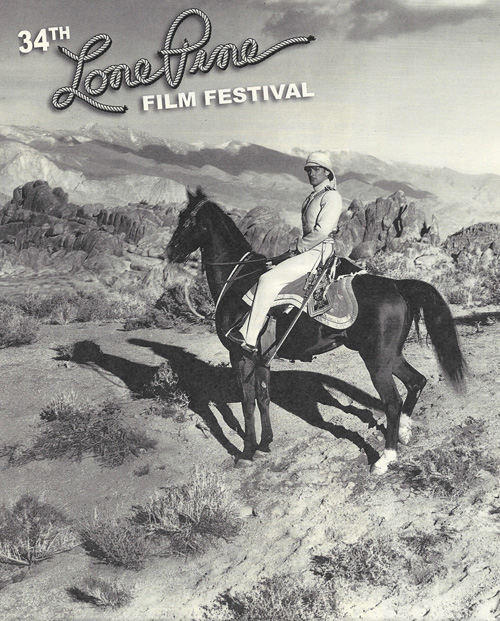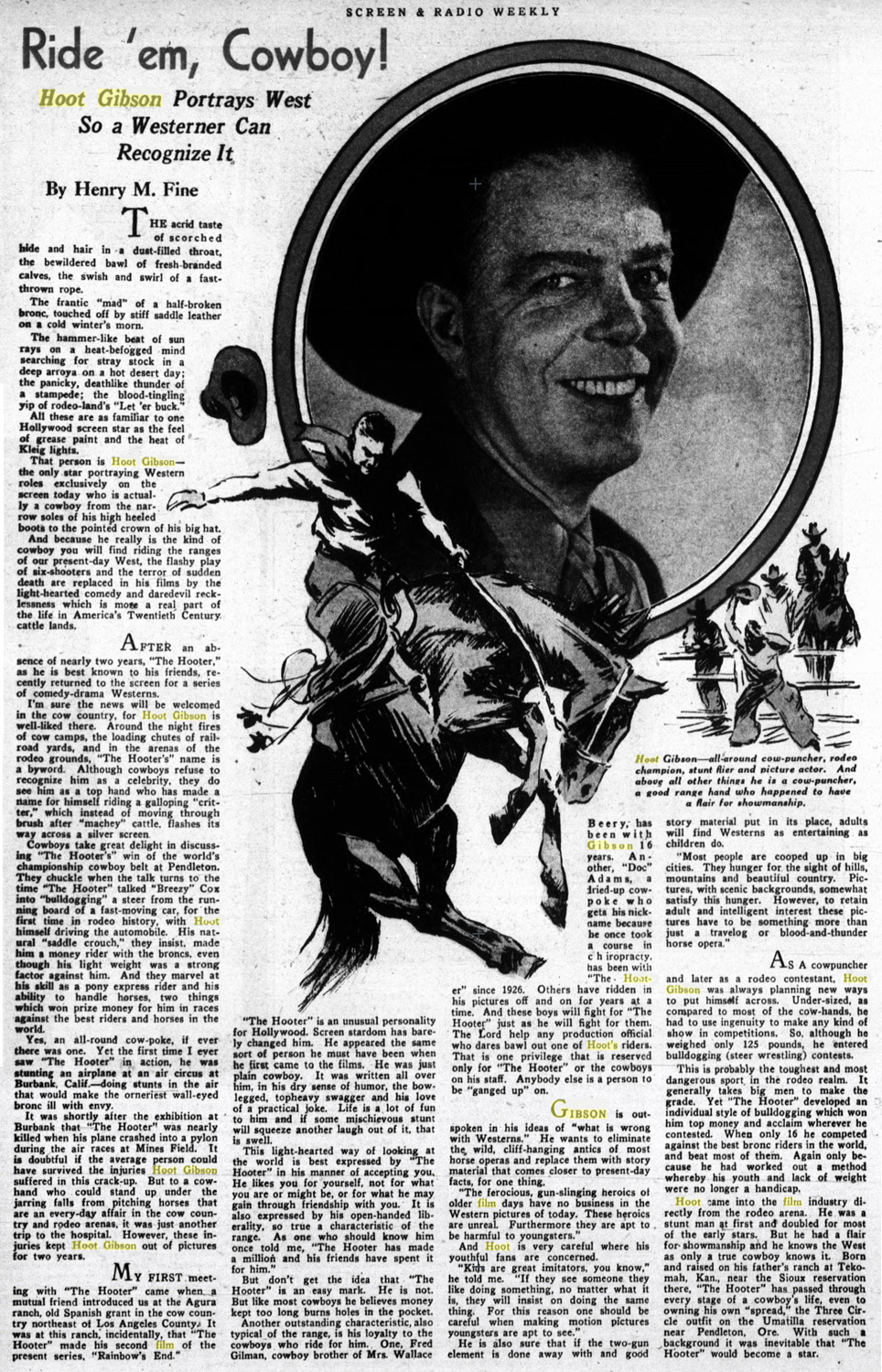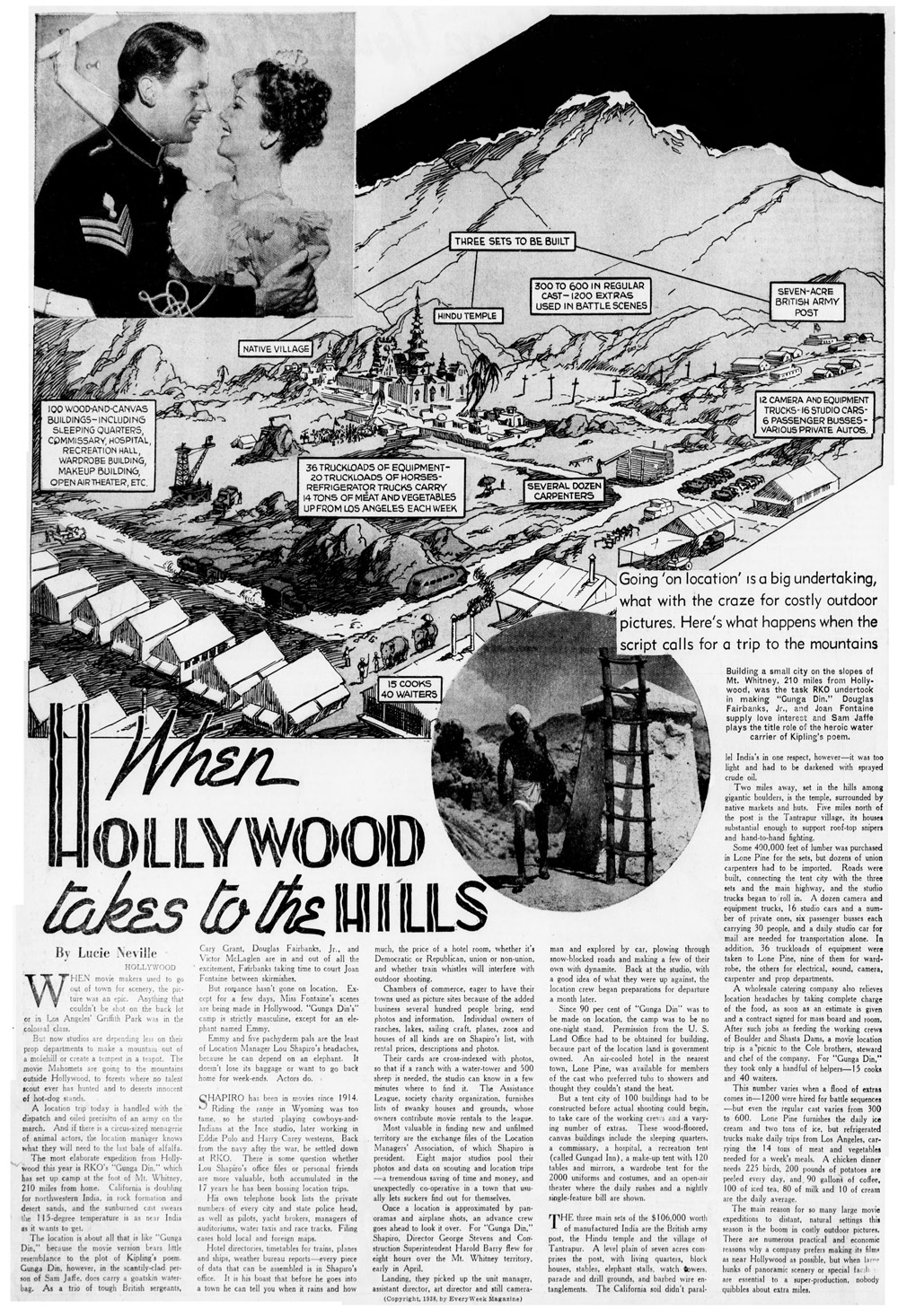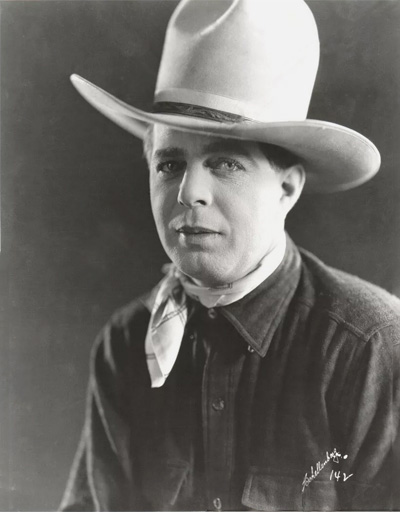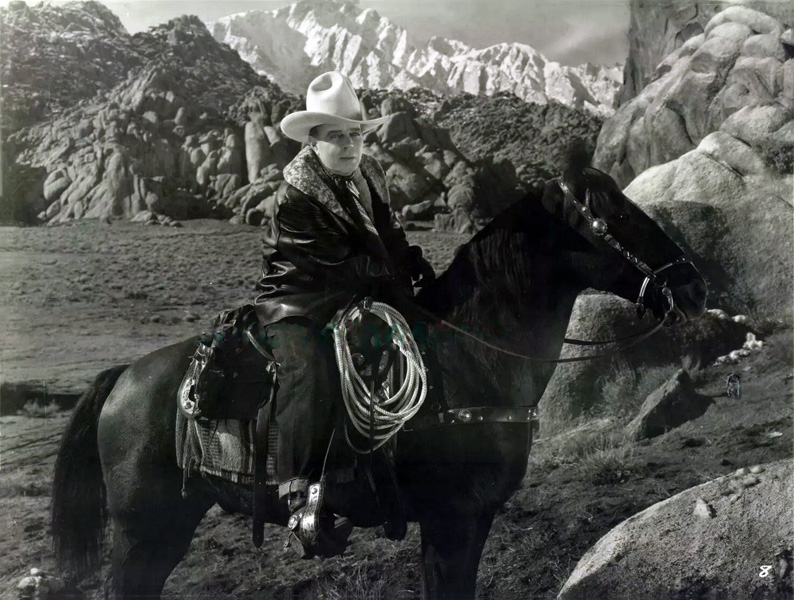









































|
|
 |
Lone Pine Film History Museum
Lone Pine, Where the Real West Becomes the Reel West

Lone Pine Film History Museum at night - courtesy of Dave Toussaint
(Copyright Dave Toussaint)
Note: "OLLP" at then end of a text block indicates the text was taken from On Location in Lone Pine by Dave Holland. |
 |
Movies/Documentaries/TV Series Filmed in Owens Valley (.xls format, .pdf format) |
 |
 |
Reflections in Time; A Legacy of Movie Making in Lone Pine
by Tron Miller
|
||
Owens Valley has been the cradle of westerns since the early '20s. It has know such legends as Fatty Arbuckle, Jack Hoxie, Tom Mix, John Wayne, Cary Grant, Errol Flynn, Hopalong Cassidy (William Boyd), Hoot Gibson, Spencer Tracy, Roy Rogers, Gene Autry, Buck Jones, Tom Tyler, Steve McQueen, Tex Ritter, Randolph Scott, Jay Silverheels, Clayton Moore, Johnny Mack Brown, Humphrey Bogart, Marlon Brando, Ken Maynard, Karl Malden, Gregory Peck, Douglas Fairbanks Jr., Susan Hayward, Jane Russell, Barbara Stanwyck. Rhonda Fleming, Anne Jeffreys, Linda Darnell, Dale Evans, Anne Baxter and a host of Hollywood celebrities over the decades. Movie production to Owens Valley is a synonymous as bread is to butter. And, Owens Valley has provided a lot of "bread and butter" to Hollywood producers over these many decades. Of course the most famous of all the places in Owens Valley for movie production has been Lone Pine and the Alabama Hills. Perhaps the 2nd best place has been the area around Hot Creek, followed by the area around Dolomite where once the fame Carson and Colorado Narrow Gauge Railroad once passed through on its southern terminus route at Keeler. The Alabama Hills and Hot Creek are timelessly still intact and continue to service the movie industry. Dolomite, where once Spencer Tracy, Robert Ryan, Anne Francis, Ernest Borgnine, Lee Marvin, and Walter Brenan entertained us all in "Bad Day at Blackrock" has long since become a ghost town site. The Carson and Colorado Railroad is gone and rail service to Owens Valley from Mojave is also a distant memory. But, HALLELUJAH, Owens Valley, and the Lone Pine area in particular, continue to service the movie industry. |
||

On Location in Lone Pine - Ruiz Hill

Carson and Colorado Railroad siding at Dolomite
The Great Trail Robbery (1903)
(Courtesy Museum of Western Film History)
  |
"He knew the country, he could find them the locations they needed, he could get them however many horses they needed, or cattle, or wagons." Yes, he knew his rolling stock, too. If they needed buckboards on Thursday, freight wagons on Friday and Conestogas on Monday, they'd be there. In the beginning, a rancher named Al Gallaher furnished the horses and cattle for the Westerns, Mrs. Anderson said, but when he moved his stock to Calistoga in the early '30s, Spainhower quickly filled the void. But he was involved long before that. A native of North Carolina, he had come to Lone Pine in 1909 via Southern California to work for the Los Angeles Department of Water and Power. (Farming was already diminishing as an industry here; that had begun when the City of Los Angeles needed water for its growing metropolis and began buying the 80 per cent of the property and water rights it now controls in the Owens Valley.) By the '20s, Spainhower had a ranch the studios could use right in town, not only as a location but as a place to keep whatever animals they brought up themselves "from down below." He was not only foreman of the DWP-owned Lucas Ranch but had begun leasing it "so he really had something to say about its operation," Mrs. Anderson said. "And I'm sure that in the beginning, that ranch was a contributing factor to his becoming the contact man up here. His involvement really just evolved." He rented them the ranch, then found them livestock, then helped them find locations. Soon the word was out: If you were going on location in Lone Pine, Russ Spainhower was the man who could help you, whether you used his ranch or not. "It really grew like Topsy," his daughter said. "He started off doing a little and ended up doing a lot." |
| His Lucas Ranch had some large corrals and barns, all in excellent condition, all available for use. And use them they did. As early as 1922, Fox shot part of Just Tony with Tom Mix in the Lucas corrals and by 1926, there was a special barn for Ken Maynard's horse, "Tarzan," and Tarzan's doubles, five in all. By the '30s, Spainhower had begun buying cattle of his own, stocking the adjoining rangeland which he bought from Dave Holland and name the "Anchor Ranch." As noted elsewhere, he began building the mission/hacienda set in 1938 but "we didn't move onto the Anchor until 1940." Mrs. Anderson recalled. Probably the first movies to use the new set were two 1939 Hopalong Cassidy Westerns, Range War and Law of the Pampas, followed by Wagons Westward (Republic 1940) with Chester Morris (who later was "Boston Blackie" for Columbia). The last picture Russ Spainhower worked on was From Hell To Texas with Don Murray. "Henry Hathaway really wanted him on that, Mrs. Anderson remembered quietly. "That was 1957, the year he died." So many years, so many films, so many friendships. When Randolph Scott retired, he paid the Spainhower family to let his horse live out his days comfortably here on the Anchor Ranch. In 1947, Russ added a western street to the hacienda set - he, the lumber yard's Rudy Henderson and Hopalong Cassidy Productions went in on thirds; they called their movie town "Anchorville." That street is gone now, so is the hacienda set - their usefulness long over, they were finally torn down in 1975 to make room for a new "real life" ranch house, although the Andersons left some of the old stucco movie wall standing just off the front yard. At least, that's still there. That and the memories. In 1964, a written tribute to Russ Spainhower said in part: "His opinion and judgment were highly respected by the movie directors and his friendship treasured." That says it all. OLLP |
The Western Stars |
|||
Ken Maynard 1895-1973 |
|||
 |
Tom Mix 1880-1940 |
||
 |
Fatty Arbuckle 1887-1933 |
||
 |
Jack Hoxie 1885-1965 |
||
 |
|||
Roy Rogers 1911-1998 |
|||
 |
|||
Gene Autry 1907-1998 |
|||
 |
|||
William Boyd 1895-1972 |
|||
 |
|||
Hoot Gibson 1892-1962 |
|||
 |
|||
Buck Jones 1891-1942 |
|||
 |
|||
Clayton Moore 1914-1999 |
|||
 |
|||
Johnny Mack Brown 1904-1974 |
|||
 |
|||
Tom Tyler 1903-1954 |
|||
 |
|||
Jay Silverheels 1912-1980 |
|||
 |
|||
Tex Ritter 1905-1974 |
|||
 |
|||
Herb Jeffreys 1913- |
|||
 |
|||
Gary Cooper 1901-1961 |
|||
 |
|||
Randolph Scott 1898-1987 |
|||
 |
|||
John Wayne 1907-1979 |
|||

|
|||
Gregory Peck 1916-2003 |
|||
 |
|||
Marlon Brando 1924-2004 |
|||
 |
|||
 |
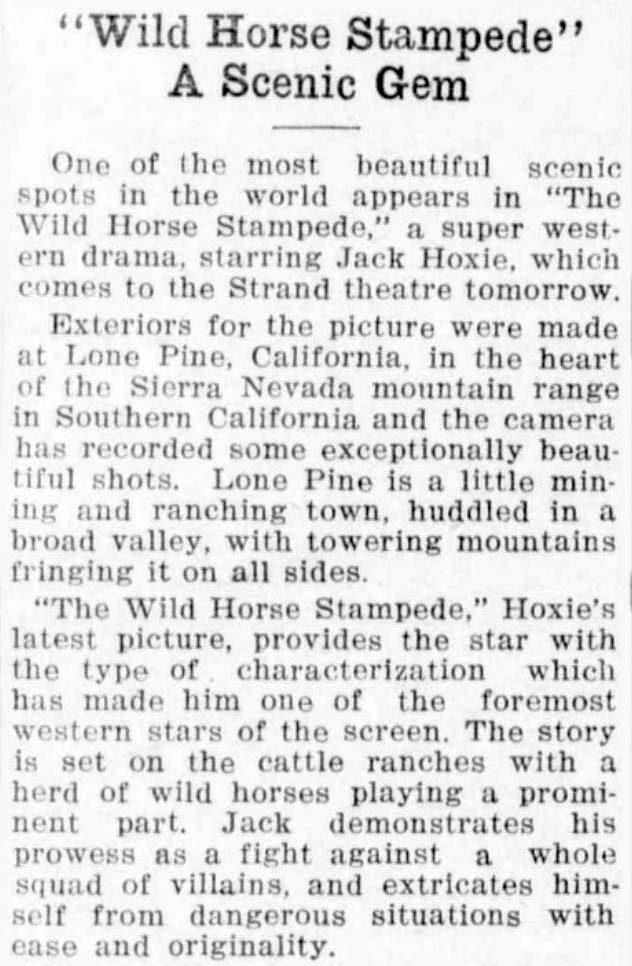 From "The Colusa Herald" of March 22, 1927 Jack Hoxie appears in "The Wild Horse Stampede" |
The Alabama Hills - Movie History and Geology
(Courtesy Museum of Western Film History)
 |
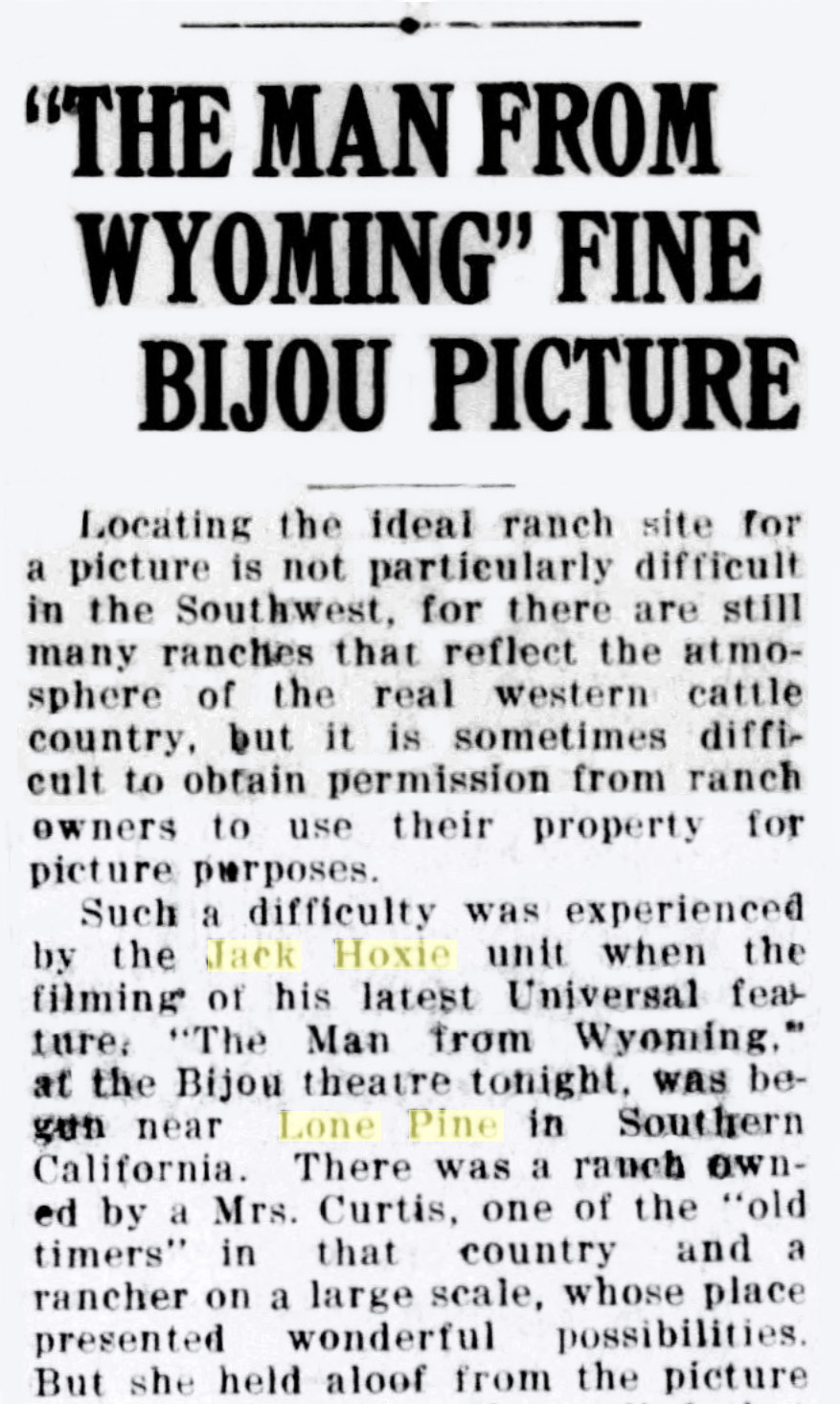 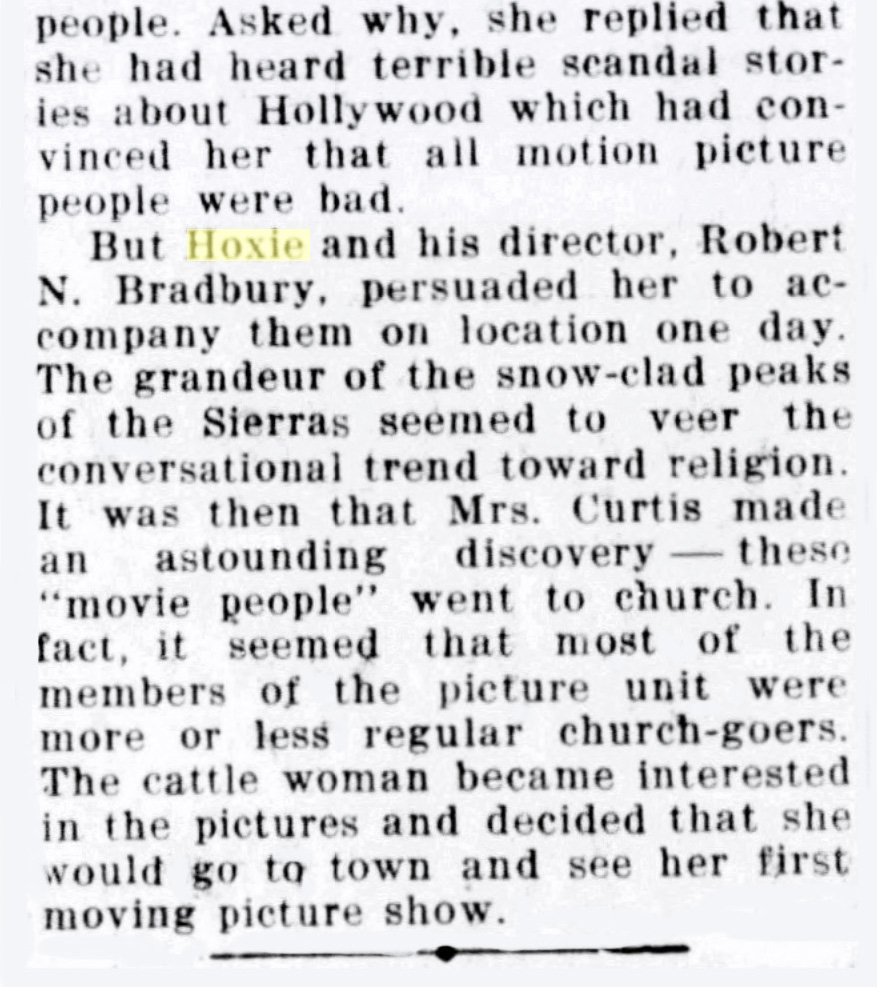 From the "Visalia Daily Times" of April 19, 1924 Jack Hoxie and Robert Bradbury persuade Mrs. Curtis, of Lone Pine, to film on her ranch. |

Alabama Hills and the Sierra Nevada by Brian Lockett
(Copyright Brian Lockett)
Whether being chased or doing the chasing, the good guys in the white hats were a Hollywood staple for years and certainly a familiar sight in the Alabama Hills. But thee was one good guy in a black hat. Indeed, if there's one cowboy hero who's identified with the Alabama Hills - and vice versa - it's Hopalong Cassidy. Just as all those Republic Westerns and serials showcased the Iverson's location ranch in Chatsworth, California, so did the Hoppys showcase the Alabama Hills. If Lone Pine was the Khyber Pass to Mom and Dad, to us kids it was Texas or Old Mexico or Argentina. (In Law of the Pampas, this was Argentina!) In other words, it was wherever Hoppy said it was. William Boyd played Hopalong Cassidy in 66 theatrical features - still a record - between 1935 and 1948 and more than a third of them were shot in Lone Pine, including the first on, Hop-A-Long Cassidy. Clarence E. Mulford wrote his first Bar 20 ranch stories in 1904 (published in Outing Magazine, some with N.C. Wyeth illustrations). Gathered into novel form in 1907, the realistic adventures featured a cowboy with a limp. (That's right: a cowboy with a limp.) He was called "Hopalong," was red-headed, swore, drank and would be changed completely when film producer Harry Sherman put him in the movies.  "Pop" Sherman felt he could do with Mulford's stories what Fox and Paramount had done with the Zane Grey novels. Mulford agreed, Paramount said it would release the pictures - that was when Sherman's first choice to play Hoppy, James Gleason, raised his acting price and lost the job - and in 1934, Sherman selected a 1910 Bar 20 novel called Hopalong Cassidy to kick off the series. That was also when he decided to go with Boyd, his second choice to play Hoppy. By the time the Cassidys had run their course in the theaters, the shrewd Boyd had bought up all the rights. He made those pictures available to that new-fangled thing called Television and people fell in love with Hoppy all over again. More importantly (in general sense), the fell in love with westerns again. Thanks to Hoppy's success, the Alabama Hills were re-introduced to the movie-watchers and to movie-makers. Cowboy heroes racing through the Alabams became standard TV fare during the '50s as studios followed Boyd's lead and not only dusted off their own old westerns for television but were encouraged to continue making new ones for the theaters (like the still-good Tim Holt series from RKO.) TV westerns of the '50s headed up the trail to Lone Pine, too, shows like The Lone Ranger, Wild Bill Hickok, Bonanza, so many more. OLLP |
 Buck Jones' Camera Car with a Bell & Howell 2709 Camera This boy (born in 1920) posed as a cinematographer on his father's ranch though he preferred riding horses and hanging out with the cowboys in Long Valley. He came back years later as a physician reading x-rays and delivering babies in Mammoth, Crowley, Bishop, Lone Pine, and Tonapah. His first month in family practice he delivered 30 babies. Later he was the Inyo Mono County Health Officer. (Photo and text courtesy of Hal Eaton) |
 Buck Jones' Packard Camera Car (Photo courtesy of Hal Eaton) Buck Jones Proud of Packard Eight - 1925 |
 "Introduced in 1912, the design 2709 soon garnered the reputation as “the most precision film mechanism ever made” and was produced for 46 continuous years. The Bell & Howell 2709 35mm motion picture camera has a well deserved reputation for capturing rock-steady images both in live action situations and when filming special visual effects. Bell and Howell hand crank. Made in Chicago, Il." (Photo and text courtesy of Page Williams) |
|
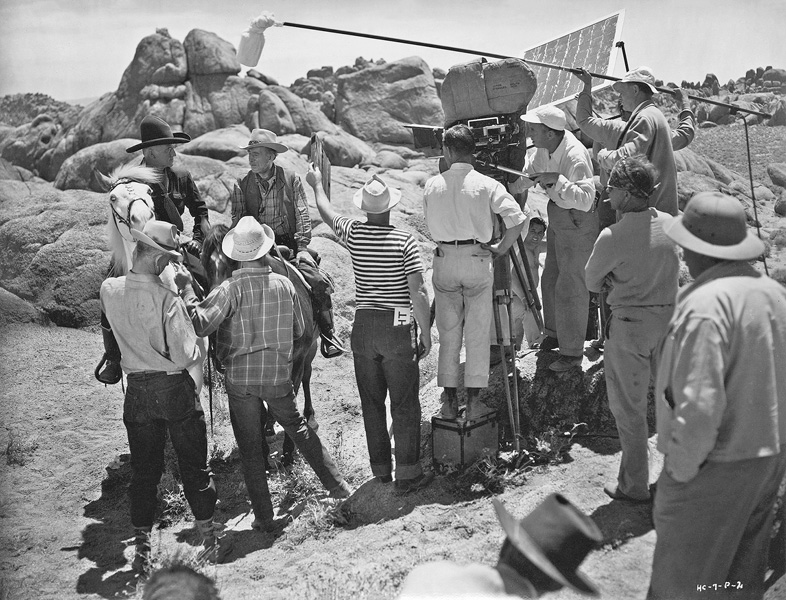 In Lone Pine's Alabama Hills: William Boyd and Andy Clyde (on horseback at left) about to shoot a scene from SILENT CONFLICT, 1947-48 season opener for the waning Hopalong Cassidy series. With a negative cost of $124,000, it was booked into 9,115 theaters domestically and earned U.S. rental revenues of $181,200. Most houses paid a flat fee of $20 for it; a few paid less. The other five Hoppys released that season didn't do as well (with domestic rentals between $140,912 and $154,328), persuading producer Boyd to hang up his Stetson—until TV beckoned a few years later. (Photo courtesy and text of Woody Wise) |
|
MAJOR FILMING AREAS IN THE ALABAMA HILLS |

NOTE: To get more details of these areas please consult: On Location in Lone Pine by Dave Holland |
 |
The Alabama Hills: History and Cultural Importance
(Courtesy Museum of Western Film History)
If you've seen 'em once, you've seen 'em a hundred times ... a modified old saying that hold true with quite a few of the rocks throughout the Alabama Hills. They do tend to pop up again and again in various movies. And why not? If a particular spot looked good to one film-maker, it often looked just as good to others. That's why you see Gene Autry Rock so often. Another popular location was Area One's Lone Ranger ambush site. That was also where John Wayne escaped his own ambush in Westward Ho (1935), where California and Johnny trapped those horses at the beginning Outlaws of the Desert (1941) and where Roy Rogers, Duncan Renaldo and Guinn 'Big Boy' Williams headed off another bunch of wild horses in 1943's Hands Across The Border, trying to lasso Trigger. THE HOPPY CABIN - Private property on Tuttle Creek Road; no trespassing, please. This was used in at least six Hopalong Cassidy Westerns, plus Bill Cody's Frontier Days (1935), Ken Maynard's Western Frontier (1935), Gunsmoke Ranch (1937) with the Three Mesquiteers, Tim Holt's Stagecoach Kid (1949) and Mysterious Desperado (1949), Gary Cooper's Springfield Rifle (1952), Glenn Ford's The Violent Men (1954) and Randolph Scott's Seven Men From Now (1956). LIGHT BRIGADE ROCK - In addition to scenes done in the area for Errol Flynn's Charge of the Light Brigade (1936), you'll also recognize the slope of the rock in Gene Autry's Cow Town (1950). This was where Jock Mahoney was escaping in a wagon - until Autry used a lasso trick to yank the rear wheels off. RAWHIDE BURIAL SITE - Also shot here wer the scenes where Robert Preston yanked Gregory Peck out of that wagon in How The West Was Won (1962), where Hopalong Cassidy captured Sidney Blackmer in Law of the Pampas (1939) and it was here that outlaws chased the Three Mesquiteers in Gunsmoke Ranch (1937). You'll also see those distinctive rock columns way in the backgroound when Smiley Burnette and the boys are trailing Autry and later when Gene is breaking that wild horse in Comin' Round the Mountain (1937) and when he's singing the title tune at the end of Boots and Saddles (1937). POT-SA-GA-WA-GARDENS - So called from the days when Paiute Indians from the local reservation put on ceremonial dances here, different portions of this area are always popping up in films. Hopp and California drov e cattle across here in Silent Conflict (1947), Robert Mitchum and Richard Martin galloped toward the sound of gunfire across here in West of the Pecos (1945) and you've already seen a photo of Gene Autry's radio show caravan driving across here in Melody Ranch (1940). And where Autry jumped that horse over the convertible in Trail to San Antone (1946) is the exact spot where John Wayne strung a rope across the trail and tripped the four horses and riders chasing him in Westward Ho. This was a favorite Autry road. He galloped along here in Boots and Saddles and after leaving the pony express station in Comin' Round the Mountain. William Elliott and Joseph Schidkraut had their final shoot-out in Plainsman and the Lady (1946) in the Gardens and outlaws had a corral here in Heart of Arizona (1938). And in an all-star scene from Trail to San Antone, Autry rode a horse he'd lassoed up to Peggy Stewart, whereupon Bill Henry socked Tris Coffin all in the one scene. Right here in Pot-sa-ga-wa Gardens. OLLP |

Trail to San Antone with Gene Autry and Peggfy Stewart - 1947
(Alternate: 2, 3, 4, 5, 6, 7, 8, 9, 10, 11, 12)
Seeing where some of your favorite movies were made in Lone Pine is an easy as looking at maps and photos and looking out the car window. And when you find one location, you'll generally find others, either along the way or often at the same spot. Case in point: When you drive up the switchbacks of the Bogart road - it's really called Whitney Portal Road - you're not merely where the cops chased Bogart, you're on the same road Lucy and Desi almost slid off in The Long Long Trailer, the same road Tyrone Power led his troops up in the King of the Khyber Rifles and the same road Dean Jagger stumbled across in Brigham Young to look out over the Owens Valley toward the dry Owens Lake bed and say "Looks like Salt Lake City to me..." (or something like that). But getting up to those cliffs may not be as easy as it sounds. Not because the road isn't paved or anything - in fact, it's about the only road that is paved between the town and the mountains (along with Horseshoe Meadow and Tuttle Creek Roads and some residential streets). The trick is getting past what lies between the town and the mountains. To reach the Sierra, you have to get past the real "star" of Lone Pine, a magnificent maze of eroded and tangled rocks and boulders called the Alabama Hills. They stretch from here to way over thee and getting past them is like asking a paper-clip to get past a magnet. the Alabama Hills - Just think of all the movies that were shot here, all the dreams that came to life here. Your own perception of these magnificent rock formations depends on how and when you were first introduced to them. If as a kid, you went to the movies on Saturday afternoons for a dime at that little neighborhood theater over by the cleaners or were a baby boomer kid raised on Saturday morning TV, then thee rugged rocks and narrow passes were the scene of so many of the great cowboy adventures with Hopalong Cassidy and Gene Autry and Roy Rogers. And Tom Mix and Ken Maynard and Buck Jones. And the Lone Ranger and Annie Oakley and Have Gun, Will Travel. On the Other hand, if you were a little older and went to the movies on Saturday nights down town, then the Alabama Hills weren't associate with the cowboy heroes at all. Instead, you remember the "A" pictures: Gregory Peck as The Gunfighter or Clint Eastwood as Joe Kidd or Kirk Douglas in his first western, Along the Great Divide. But all the big pictures done up here, it was probably the dusty images of the British Army on patrol that branded this magnificent rocky setting more indelibly in our minds than any others. Because let's fact it, as far as Hollywood was concerned, the Alabama Hills looked more like India than India did. This was the Khyber Pass. OLLP |
 |
 |
 |
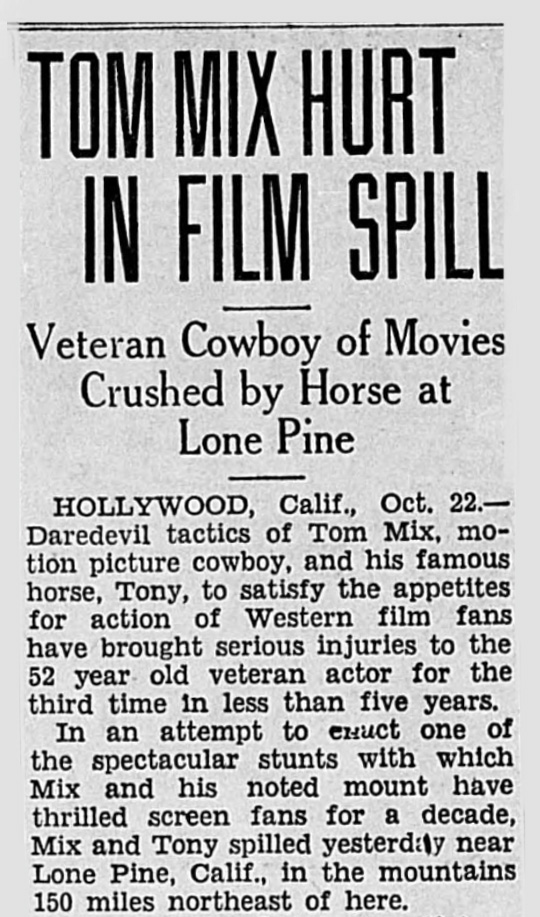 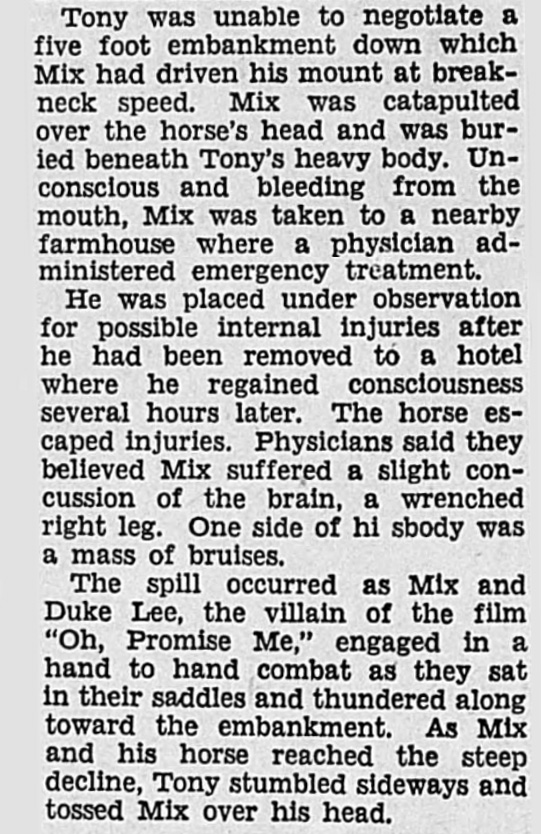 From the "San Pedro News-Pilot" of October 22, 1932 Tom Mix injured in a spill with his horse Tony |
 |
 |
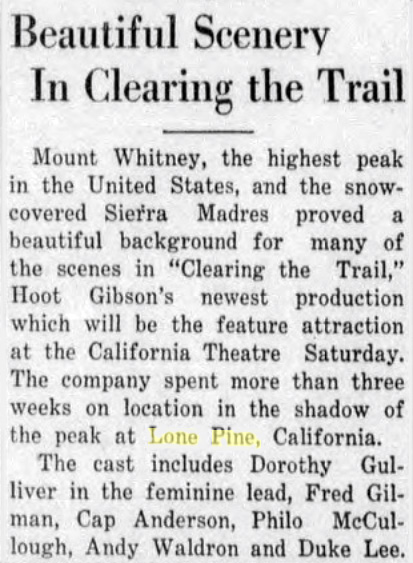 From the "Dunsmuir News" of December 28, 1928 Hoot Gibson's newest production - "Clearing the Trail" |
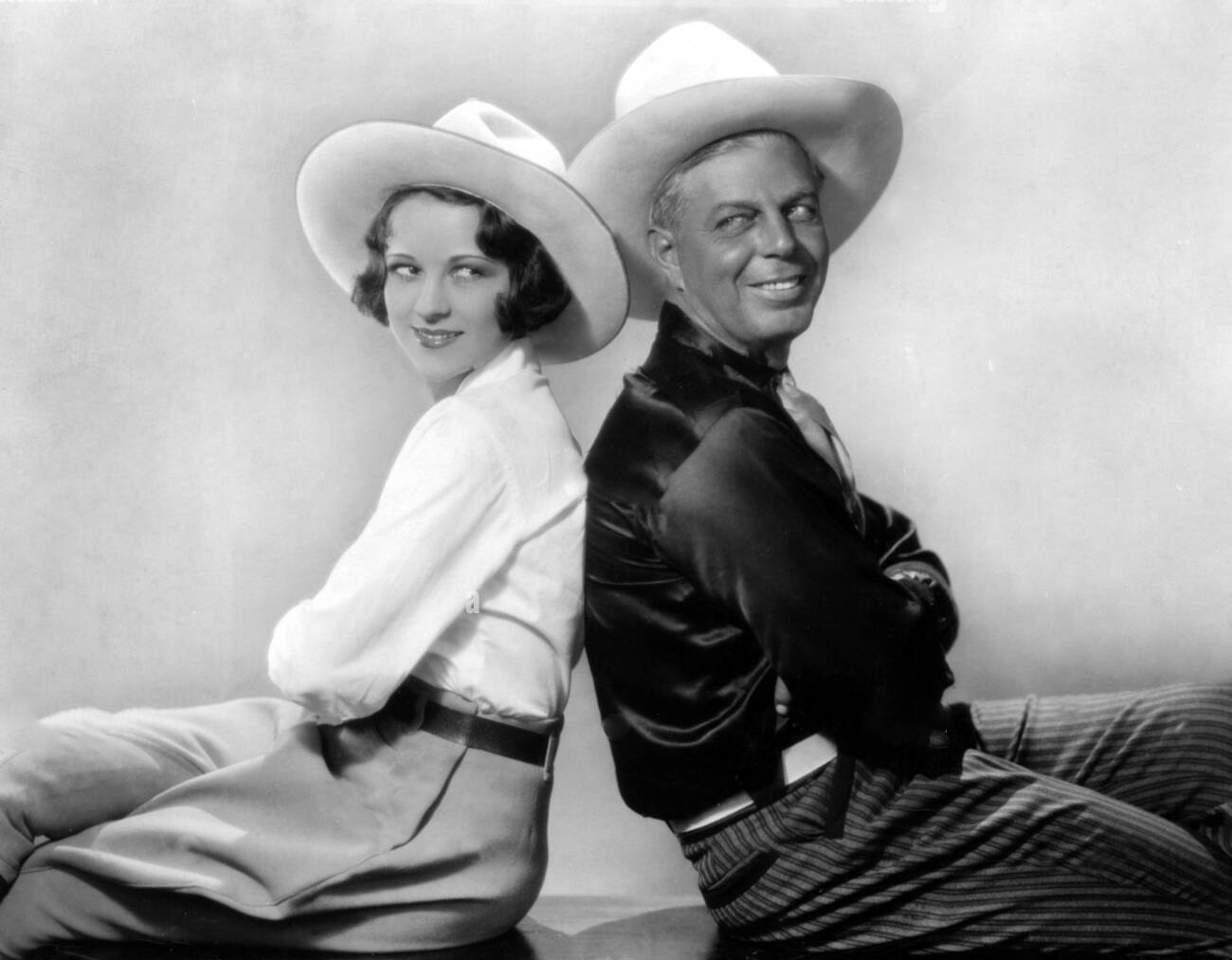 Sally Eilers and Hoot Gibson - 1929 |
|
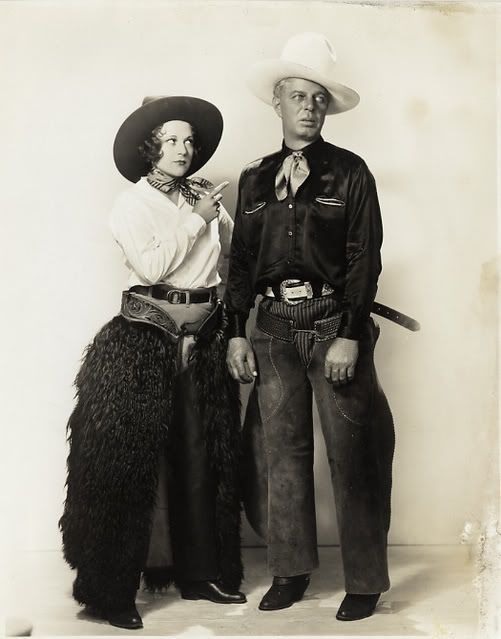 Sally Eilers and Hoot Gibson |
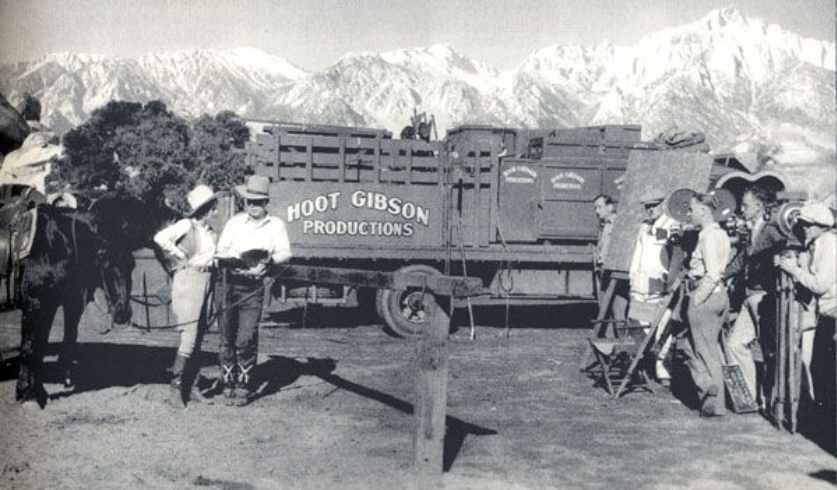 Hoot Gibson Productions on location in Lone Pine with Sally Eilers - circa 1930 |
| Monache Meadows Cowboys | ||
Sam Lewis & Sierra Lady Pack Station |
||
| Ed Brown - Mt. Whitney Pack Trains Packer and Cowboy Poet | ||
More At the Movies ... in Lone Pine |
||
Duane Rossi - Cowboy, Packer, and Cowboy Poet |
||
Little Lake, CA |
||
Irene Kritz: Mt. Whitney Pack Trains Cook, Packer, Cowgirl, and Author |
Sign Guestbook View Old Guest Book Entries Oct 1999 - Feb 2015 (MS Word) |
 CONTACT the Pigmy Packer |
View Guestbook View Old Guest Book Entries Oct 1999 - Feb 2015 (PDF) |



